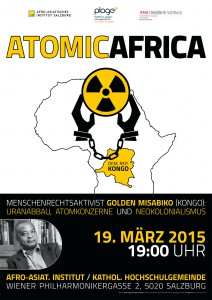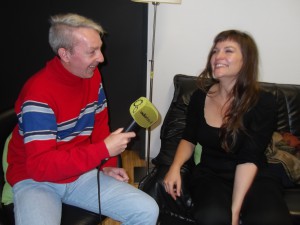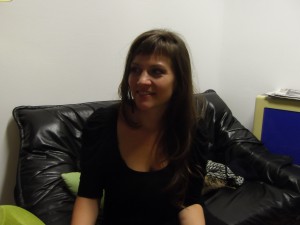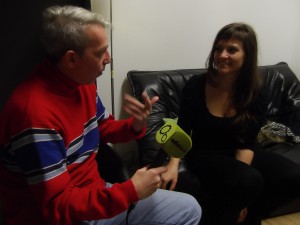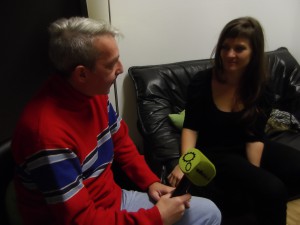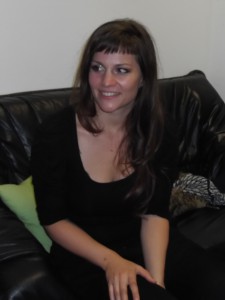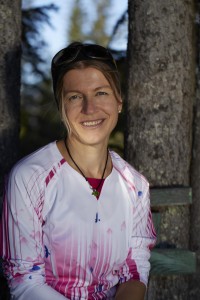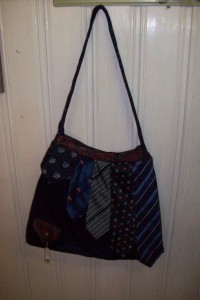Archiv der Kategorie: Uncategorized
Sendungsvorstellung von 12 Punkte für ein Hallelujah – Der ESC auf UKW
Für diese Sendereihe habe ich eine eigene Seite hier angelegt. Oben im Balken einfach reinklicken und die Sendungsbeschreibung zum lesen öffenen.
Gudrun Pflüger – von Wölfen und Wundern
Wolfsforschung heute
Von Wölfen und Wundern weiß Gudrun Pflüger als Gast in der Hunderunde zu erzählen. Berührende Begegnungen mit dem „bösen Wolf“ hat sie ebenso erlebt, wie Konfrontationen mit Menschen, die eben diesen „bösen Wolf“ erbarmungslos jagen und töten.
Dennoch ist sie kein Mensch, der verurteilt. Sie zeigt auf, sie benennt und setzt auf Information und Aufklärung. Was wir kennen, fürchten wir nicht mehr.
Und so weicht sie auch nicht der Begegnung mit Andersdenkenden aus, sondern ist bereit anderen zu begegnen.
Im Gespräch wird deutlich: sie mag nicht nur die Wölfe – sie mag auch die Menschen.
Servicebox:
Wolfspirit – meine Geschichte von Wölfen und Wundern von Gudrun Pflüger
The las wild wolves von Ian McAllister, Vorwort Paul Paquet
Auge in Auge mit dem Wolf – 20 jahre unterwegs mit dem Wolf von Günther Bloch mit Fotos von Peter Dettling
Wolfsforschungszentrum Ernstbrunn
Die Musik zur Sendung:
Sendung anhören:
Live auf der Radiofabrik 107,5 oder per Livestream immer am 2. Mittwoch im Monat um 12:08 Uhr und am 2. Donnerstag im Monat um 19:06 Uhr. Nachhören ebenfalls über die Radiofabrik oder über den Hunderunde Blog.
Feedback und Kontakt: Karin Immler, www.knowwau.com
Deneb – Unwiederbringbare Improvisationen und hypnotisierende Musik
Deneb aus Salzburg machen Musik zwischen Worldmusic, Elektronic, Ethno und Klassik. Und das ohne konkrete Vorgaben – alles ist improvisiert, so auch das erste Album „Cosmic Comics“, das am kommenden Donnerstag im Jazzit präsentiert wird. Das Wort „Album“ trifft es dabei ganz gut, wie in einem Fotoalbum sind hier Momentaufnahmen vereint, das meiste davon ist unwiederbringlich, unwiederholbar.
Gudrun Raber-Plaichinger und Tobias Ott von Deneb sprechen heute im Magazin um 5 über dieses außergewöhnliche Projekt und über das kommende Konzert im Jazzit.
Und: Ihr könnt wieder etwas gewinnen, wir haben jeweils 2x ‚Cosmic Comics‘ und 2×2 Freikarten für das Konzert von Deneb für euch – tune in!
Wölfe und andere Wunder
Wolfspirit
Wölfe und Wunder hat Gudrun Pflüger erlebt und erfahren. Die Salzburgerin war in ihren jungen Jahren begeisterte Sportlerin und hat gelernt, an ihre Grenzen zu gehen. Später – als Wolfsforscherin – ist ihr das zugute gekommen. Wir plaudern in der Hunderunde über den bösen Wolf aus den Märchen unserer Kinderzeit. Wurde der Wolf instrumentalisiert? Wurde er bewusst als Dämon inszeniert?
Wir sprechen auch darüber, wie unterschiedlich in der Menschenwelt weibliche und männliche Leistung bewertet wird. Eine Wolfsfamilie ( Großfamilie um genau zu sein) wird normalerweise von einem Pärchen, also eine Wölfin und einem Wolf geführt . Und dies geschieht in einer partnerschaftlichen Weise, in der beide Partner ihre Fähigkeiten und Talente zum Wohle des Ganzen nützen. Und in vielen Fällen, hat durchaus die Wölfin das Sagen und nicht der Wolf…
Wie oft bedenken wir, welche Folgen unsere Handlungen haben? Jede Ursache hat eine Wirkung – oder mehrere. Ist nicht die Wirkung wieder Ursache für eine weitere Wirkung?
Interessante Überlegungen einer interessanten Frau.
Sendung anhören:
Live auf der Radiofabrik 107,5 am 8. April um 12.06 Uhr oder am 9. April um 19.06 Uhr. Nachhören ebenfalls über die Radiofabrik oder über den Hunderunde Blog.
Feedback und Kontakt: Karin Immler, www.knowwau.com
Am 13. Mai heißt es in der Hunderunde:
Die Minis kommen! Kleine Hunde ganz groß!
Gudrun Pflüger in der Hunderunde
Gudrun Pflüger, Wolfsforscherin und Autorin, ist zu Gast in der Hunderunde am 8. April. Ihr Buch „Wolfspirit“ ist der sehr persönliche Bericht einer mutigen Frau, die nach einer dramatischen Diagnose zurück ins Leben gefunden hat.
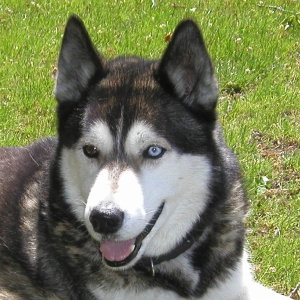
Seelenhunde hat sie jemand genannt – jene Hunde, die es nur einmal im Leben gibt, die Du begleiten darfst und die Dich auf andere Wege führen. Die wie ein Schatten sind und wie die Luft zum Atmen…
In der Hunderunde plaudern wir über über Hunde und Wölfe, über Menschen und über das Leben.
Sendung anhören:
Live auf der Radiofabrik 107,5 am 8. April um 12.06 Uhr oder am 9. April um 19.06 Uhr. Nachhören ebenfalls über die Radiofabrik oder über den Hunderunde Blog.
Feedback und Kontakt: Karin Immler, www.knowwau.com
Am 13. Mai heißt es in der Hunderunde:
Die Minis kommen! Kleine Hunde ganz groß!
Ur-Yoga
Ca. 5000 Jahre vor Christus treffen im Industal zwei Völker aufeinander: die einen betrachten die Welt als Illusion und wollen mit ihren Übungen und Riten aus heiligen Schriften den Körper, das Irdische, überwinden (Vedisch). Die anderen hingegen sehen die Welt als real an und den Körper als Hauptwerkzeug, um die Welt im wahrsten Sinne des Wortes zu begreifen (Tantra). Aus der Verbindung dieser beiden Weltbilder ist die Grundlage für das heutige Yoga entstanden. Yoga bedeutet also so viel wie Verbindung. Verbindung miteinander und über Trennendes hinaus, Verbindung von Körper, Geist und Seele.
Horst Hausleitner: Autor, Musiker und Abenteurer
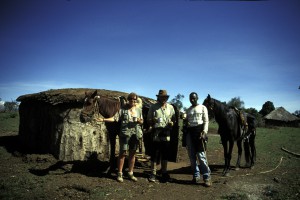 Er ist nicht nur ein Jahr lang 5000 km durch Afrika geritten, er hat auch 3 Bücher geschrieben und lebt von seiner Musik. Nach einer versuchten Auswanderung nach Afrika hat er sich schließlich in Wien niedergelassen.
Er ist nicht nur ein Jahr lang 5000 km durch Afrika geritten, er hat auch 3 Bücher geschrieben und lebt von seiner Musik. Nach einer versuchten Auswanderung nach Afrika hat er sich schließlich in Wien niedergelassen.
Bei meinem Besuch in seinem Zuhause sprach er mit mir unter anderem über Gesellschaftsmuster, über das Träumen und Scheitern und die unbesiegbare Neugier aufs Leben.
Zu hören am Ostersonntag, 5.April, 15-16 Uhr
[iframe src=“https://cba.fro.at/284141/embed?&waveform=false&socialmedia=true&subscribe=true&series_link=true“ width=“100%“ height=“148″ style=“border:none; width:100%; height:148px;“]
Upcycling, Nachhaltigkeit, Wiederverwendung – „Mein: Fach“ gegen Wegwerfmentalität
„Mein: Fach“ ist ein vom Verein für Lebensqualität und Wertigkeit initiiertes Projekt und hilft dabei, für Dinge die normalerweise weggeworfen werden neue Verwendung zu finden – oder es unterstützt auch dabei, selbst hergestellte Produkte anderen präsentieren und anbieten zu können. Nachhaltigkeit ist das Stichwort, mit „Mein: Fach“ wird eine Plattform geboten und in Berndorf im Vereinslokal steht dafür ein Regal zur Verfügung. Das kann befüllt werden und jeder kann den Preis seiner Waren bestimmen.
Arno Rigger, Obmann des Vereins für Lebensqualität und Wertigkeit ist heute bei Matthias Falkinger im Magazin zu Gast und spricht über das Projekt, die Ideologie hinter dem Verein und wo man „Mein: Fach“ auch für sich nutzen kann.
Übrigens: Das im Bild ist eine Tasche aus Krawatten. Was es damit auf sich hat erfahrt ihr ab 17.06 Uhr im Magazin um 5 ^^
‚Atomic Africa‘ – Menschenrechtsaktivist Golden Misabiko zu Gast im Magazin um 5
Die Thematik des Abbaus und Schmuggels des radioaktiven Stoffes Uran gewinnt in Afrika zunehmend an Brisanz – ökologische, gesundheitliche und soziale Schäden bereits beim Abbau, die Verwendung in Kriegen un Konflikten, eine neokoloniale Atommafia und Menschenrechtsverletzungen gehen damit einher. Der Menschenrechtsaktivist Golden Misabiko ist Preisträger des Nuclear-Free-Future Awards 2014 in der Kategorie „Widerstand“, und setzt sich unter persönlichem Risiko gegen die Nuklearisierung Afrikas ein.
Am 19. März berichtet Misabiko im Afroasiatischen Institut in Salzburg in einem Vortrag vom Uranabbau, Atomkonzernen und Neokolonialismus in Afrika, am Mittwoch, den 18. März ist er live ab 17 Uhr bei Larissa Schütz im Magazin um 5 zu Gast.
Weitere Infos: www.plage.cc
